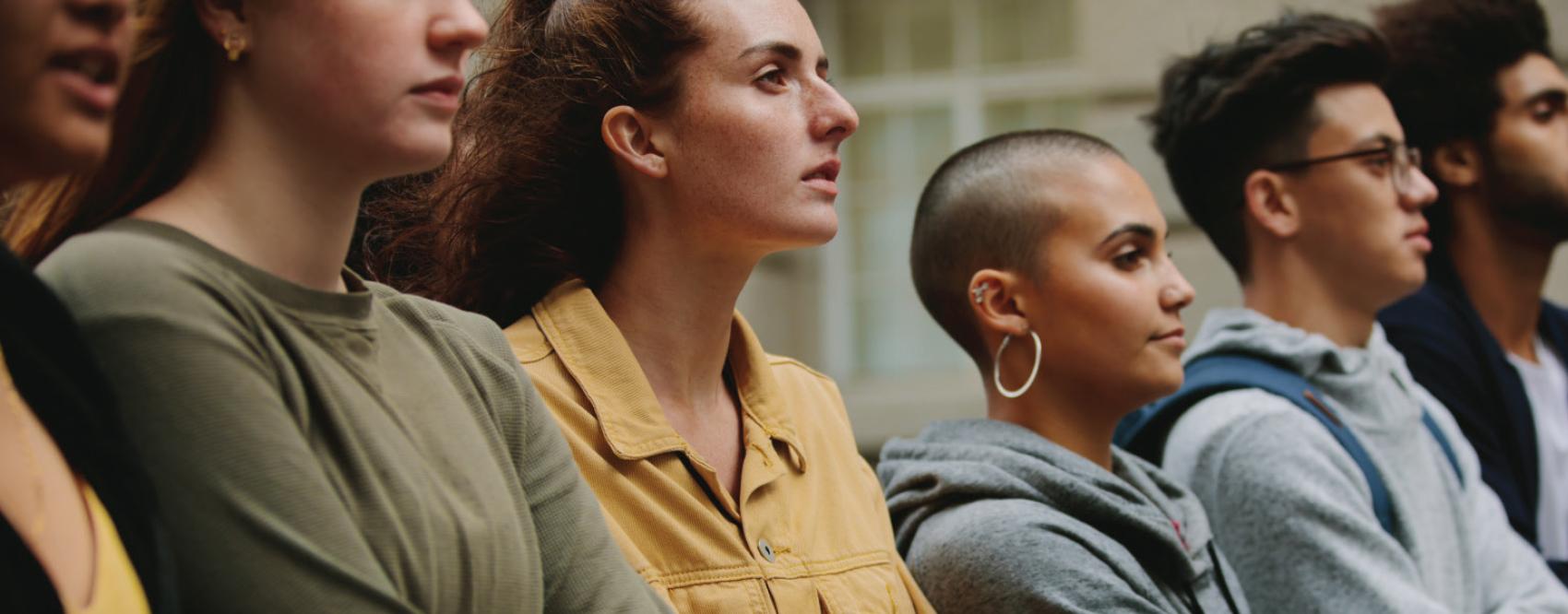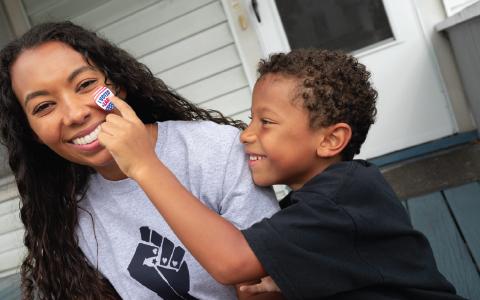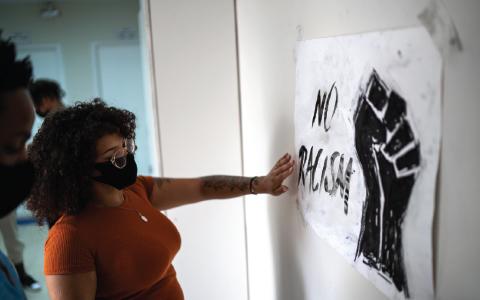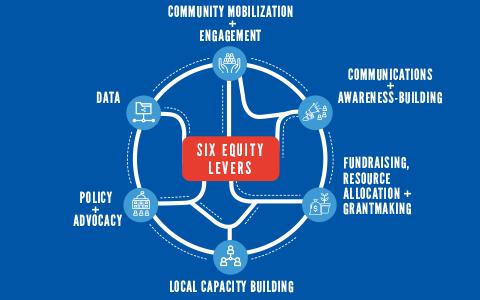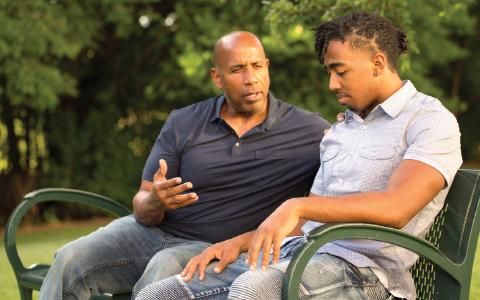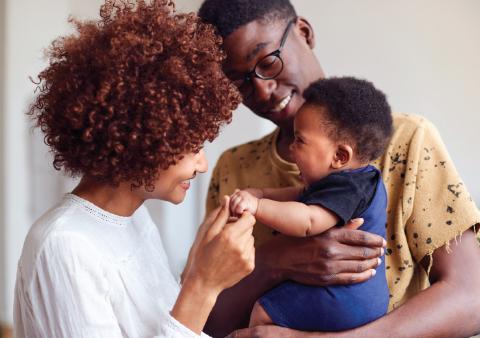
Getting Started
Addressing present day racial inequities requires a holistic approach that respects the lived experiences of people of color and recognizes the lasting impact of past and present structural, institutional and racial discrimination. Integrated, cross-cutting strategies in education, economic mobility, and health are essential to meet the magnitude of the challenge and make significant change. United Ways are well poised to equitable community change, leveraging work across impact areas, partnerships that span public and private sectors, and convening capacity.
Strengthening Our Equity Muscle to Advance Impact: Strategy Guides in Childhood and Youth Success, Economic Mobility, and Health are designed to support United Ways in driving equitable, structural and sustainable community change. They build on the community impact guides initially shared in 2016 and complement United Way Worldwide’s Equity Framework.
The Strategy Guides are intended for use by U.S. based United Ways that want to incorporate an explicit equity lens into their community impact work. They are designed to support United Way leaders and staff, especially Impact, Policy and Advocacy, Resource and Development, and Communications and Awareness Building teams in that effort. It provides strategies and approaches specific to functional team areas.
- The use of BIPOC
-
Throughout this document, you will notice the use of BIPOC, an acronym for Black, Indigenous, and People of Color. In isolation, the popularized use of People of Color (POC), often conflates the experiences of Black and Indigenous people, minimizing the historical relationship that shapes the experiences of those that identify as Black and Indigenous in the United States. Federal, State, and local legislative policies have effectively segregated millions of BIPOC families in under-resourced communities, systematically limiting access to equal opportunity.
Past and current discrimination lies at the root of the racial disparities we seek to remedy. This strategy guide offers perspectives, strategies, and approaches that will shift how we engage and co-create solutions with those most disproportionately impacted. United Ways have a tremendous opportunity to leverage cross-sector partnerships to generate solutions to address persistent inequities across education, economic mobility, and health.
- Strengthening Our Equity Muscle to Advance Impact: Strategy Guides in Education, Economic Mobility, and Health
-
Strengthening Our Equity Muscle to Advance Impact: Strategy Guides in Childhood and Youth Success, Economic Mobility, and Health (“Strategy Guides”) are designed to support United Ways in driving equitable, structural and sustainable community change. They build on community impact strategy guides initially shared in 2016 and complement the United Way Worldwide Equity Framework.
As the United Way network seeks to more explicitly address racial inequities, advancing specific goals, strategies, and outcomes in education, economic mobility and health, all areas with persistent inequities rooted in historical policies and practices, is paramount to making fundamental change.
The Strategy Guides detail why United Way is placing an emphasis on addressing disparities rooted in racism. Data shows that racism in the United States has been the most pervasive form of discrimination which has resulted in significant rates of poverty, unemployment or underemployment, a lack of educational opportunities, and health disparities within Black Indigenous People of Color (BIPOC) communities.
Based on the six Equity Levers detailed in the Equity Framework, the Strategy Guide outlines ready-to-deploy strategies to address inequities and close educational, economic, and health gaps rooted in historically institutionalized racism.
The Six Equity Levers are as Follows:
- Data
- Community Mobilization and Engagement
- Communications and Awareness Building
- Policy and Advocacy
- Fundraising, Resource Allocation and Grantmaking
- Local Capacity Building
The use of the Equity Levers throughout the Guides serves to emphasize the particular aspects of inequity on which local United Ways should place their focus when trying to attain specific key outcomes.
United Way’s 2028 U.S. Goals remain the same and provide a foundation for suggested racial equity goals for each impact area. Using Before beginning this guide, it is recommended that you ground yourself in several tools and resources that will help you to strengthen and deepen your understanding of our approach to community impact and equity. The tools are:
- Community Impact Model Overview — a summary of our 2028 U.S. Goals, the original Strategy Guides, and information about how to establish a Community Impact agenda. This information can be found on United Way Online.
- The Equity Framework — a tool to help build the capacity of United Ways to integrate an explicit equity lens throughout their work and core business practices.
- The Equity Toolkit — a tool to assist you in building an internal understanding of the core issues related to equity and deepen your organization’s capacity to focus on race, equity and inclusion.
Specifically, the Strategy Guides leverage the Six Levers in the Equity Framework as a starting point and foundation for driving community change to explicitly address gaps and disparities. With this in mind, it is critical that you are familiar with the levers in the Framework, particularly the Data and Community Mobilization and Engagement levers. These core components are foundational to the approaches that United Ways can employ to address challenges in their communities and are integral to supporting a strong base for an equity focused community impact agenda.
- The Strategy Guide contains five essential components:
-
- Introduction and Context Setting
- Advancing Childhood and Youth Success and Closing Gaps in Outcomes Strategy Guide
- Advancing Economic Equity and Closing Gaps in Outcomes Strategy Guide
- Advancing Health Equity and Closing Gaps in Outcomes Strategy Guide
- Functional Area Approaches
- Introduction and Context Setting
-
This section details why United Ways should prioritize equity within their community impact work. It delves into our 2028 U.S. Goals and explores the importance of having an equitable approach to help us to accelerate our local impact and address historical inequities in our society.
The Strategy Guides are separated by Community Impact area and each one has the same overall structure. They all contain:
- An overview of the Community Impact area through an equity lens
- The Community Impact specific 2028 U.S. Goal
- A new Community Impact equity goal
- Key outcomes with corresponding strategies, and approaches
- Data points and sources
- Local United Way examples of cross-cutting equity strategies that address challenges in local communities
- Functional Area Approaches
-
This section lists strategies and approaches included in the Strategy Guides by functional area and is intended to assist United Way staff in identifying approaches that correspond with their primary job responsibilities.
For over one hundred years, United Way has been acknowledged by communities around the globe as a cornerstone in providing integrated community solutions to address evolving economic and societal challenges. Agility and flexibility are the mainstays required to sustain relevance and competitiveness in a rapidly evolving philanthropic marketplace. The Modern United Way Blueprint is a framework of ten critical success factors that ensure the network’s continued relevance, impact, and ability to create meaningful change on the issues communities care about most.
To successfully embrace a growth mindset, teams must engage new partners, serve as community conveners, and lead with humility. Around the world, growing inequality has emerged as one of the most critical issues of the generation. Advances in technology have accelerated social connectivity through improved access to information. But it is these same technological advances that increase attention on the inequalities that inhibit historically marginalized community members from taking advantage of such advances. In the United States, racial inequality is entrenched in communities of all sizes.
The work of United Way is informed by a comprehensive understanding of place-based strategies that drive social change. However, the current moment of inflection has created an urgency to implement a broader set of actions aimed at eliminating root causes of systemic, interconnected inequality.
In the United States, United Way Worldwide (UWW) shared 2028 U.S. Goals that build on the impact work in local communities across the United States. The 2028 U.S. Goals set clear, simple targets and were created by a team of network leaders and UWW. These goals serve as our collective north star, but are localized in each community to maximize impact. In pursuit of our 2028 U.S. Goals, we intend to engage with 10 million people in over 1,000 communities. As a network, we value relationships established with community members, leaders, and organizations. These relationships, representing every sector of society, reflect joining together and working to do what one individual or entity is unable to do alone. Applying a racial equity lens to community engagement with an emphasis on including those who have been historically marginalized, underscores the priority United Way places on engaging community residents as co-creators of effective impact solutions.
Years of divestment and segregation have amplified the voices and perspectives of some, while suppressing the voices of others. This silencing limits the effectiveness of community influence on policy makers who make key decisions about resource investments. Decisions, often made under universal declarations of public good, allow policy makers to bypass the intersections where the experiences and identities of these silenced community members reside. This guide centers authentic community engagement as one way to implement equitable strategies that reflect a cooperative approach. We believe that explicitly addressing persistent racial gaps and disparities in education, economic mobility, and health is critical to advancing our 2028 U.S. Goals.
The way we talk about the work of United Way, our diverse communities, and the residents we serve, matters. United Ways are consistently viewed as trusted communicators wielding expansive platforms that help raise awareness of issues most severely impacting local communities. Our work and the way we create messages to communicate about our efforts, makes a difference in perception. The Frameworks Institute defines framing as “making selective decisions on how we say what we say.” This means deciding what is emphasized, what is explained and what is left unsaid. “Framing” highlights the strengths and assets of the individual and the community. “Framing” shifts historically dominant ideas and approaches in education, poverty, and health from status quo to challenges that question old notions. How these challenges are framed then allows an opportunity to engage with the public’s trust, encouraging the political will to confront them.
In much of our impact work, equity has been implicitly embedded within our approach. United Ways and community partners have a solid foundation to explicitly integrate equity as both a process and an outcome. While it is true that disparity and inequities exist across multiple dimensions of identity, (i.e., race/ethnicity, gender, ability, sexual orientation, and income), data confirms that the most pervasive and seemingly intractable manifestation of disparity appears in historical patterns of institutional racism.
